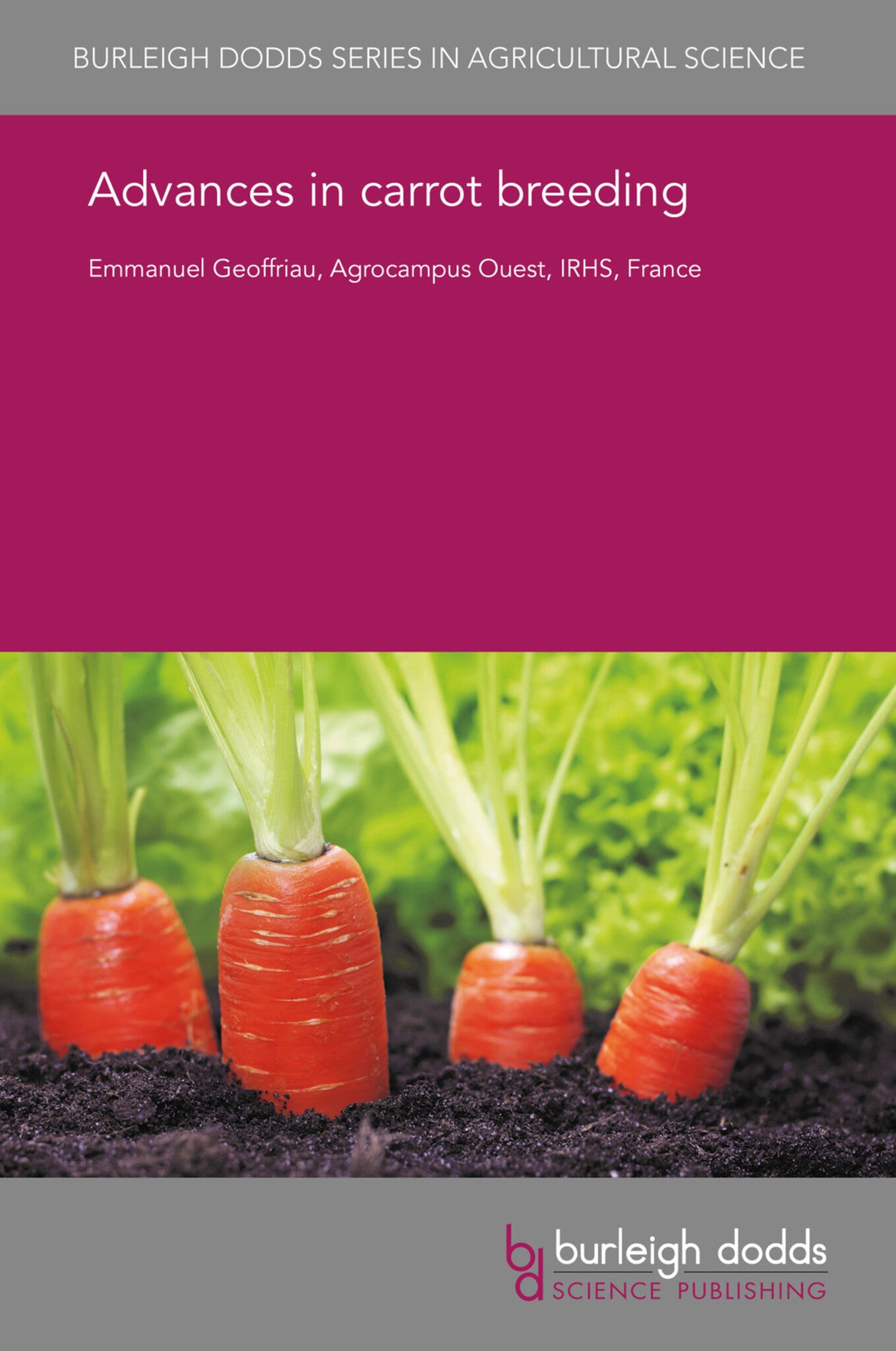We're sorry. An error has occurred
Please cancel or retry.
Advances in carrot breeding

Some error occured while loading the Quick View. Please close the Quick View and try reloading the page.
Couldn't load pickup availability
- Format:
-
09 September 2019


SCIENCE / Life Sciences / Horticulture, Commercial horticulture, TECHNOLOGY & ENGINEERING / Agriculture / Agronomy / Crop Science, TECHNOLOGY & ENGINEERING / Agriculture / Sustainable Agriculture, Sustainable agriculture, Agronomy and crop production

1 Introduction 2 A large diversity for breeding 3 Breeding for crop performance 4 Breeding for product quality and diversification 5 Main methods and techniques for carrot breeding 6 New technologies development 7 Case study: impact of hybrid varieties and modern breeding 8 Future trends 9 Acknowledgements 10 Where to look for further information 11 References



